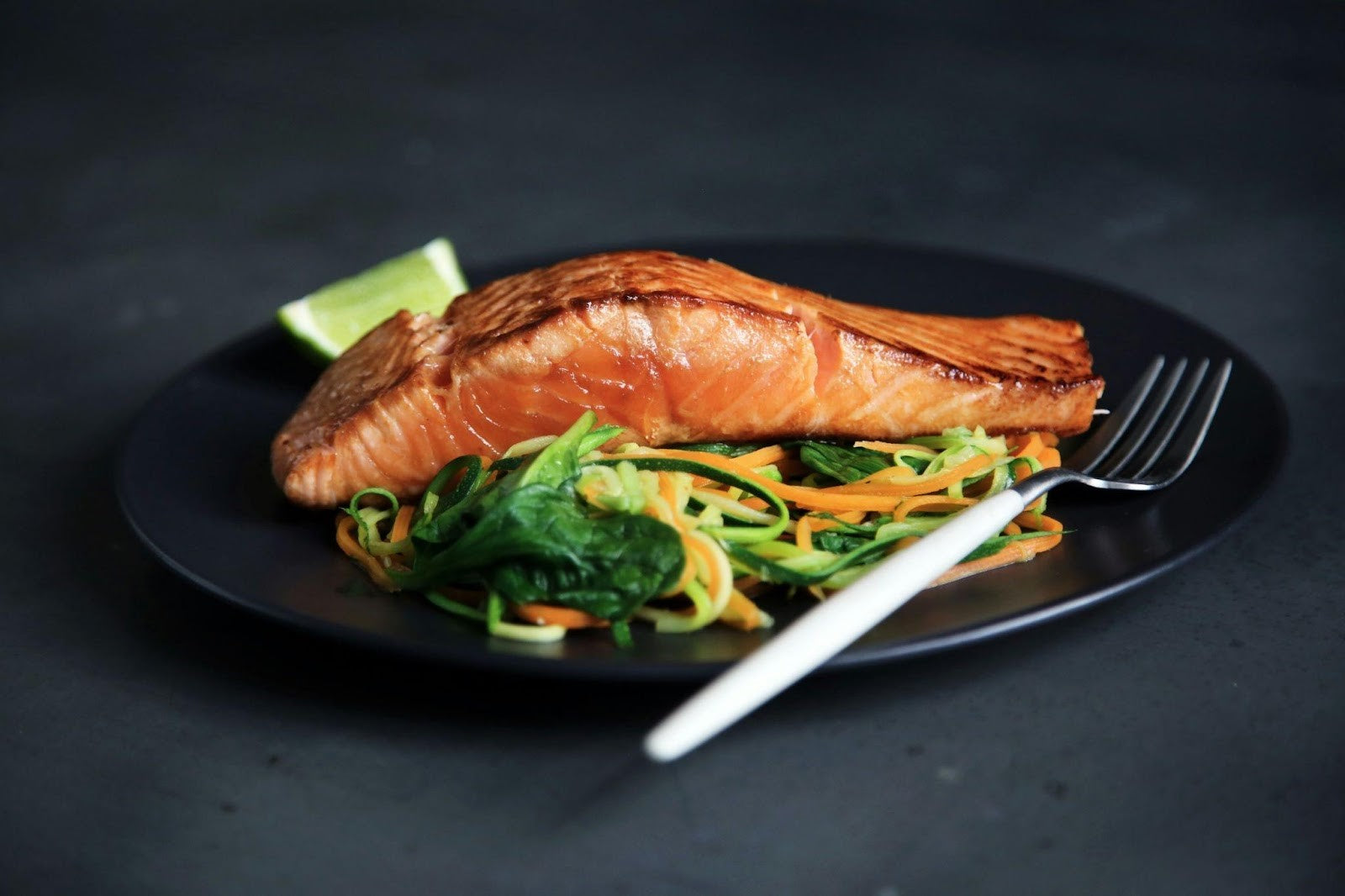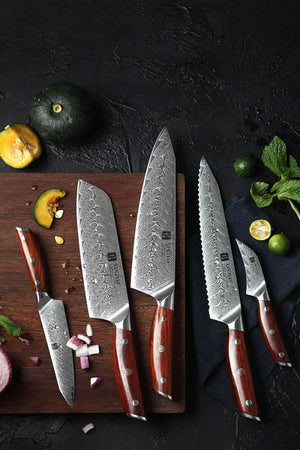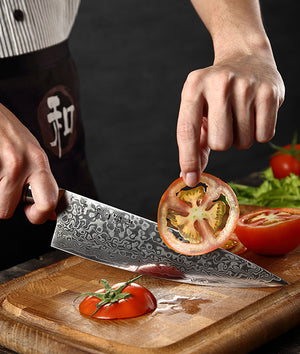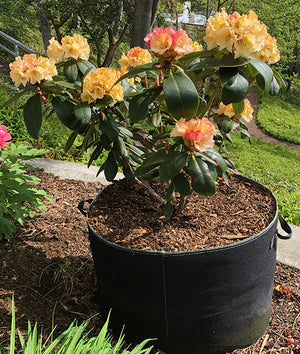
How To Know When My Salmon Is Done
For seafood lovers, salmon is easily one of the most delicious fish out there - not only is it tasty and full of nutrients, it's also incredibly versatile. So, it’s no surprise that it also tends to be a favorite among both professional chefs and home cooks.
Depending on what you're trying to achieve, and he dish you're preparing, salmon can be grilled, baked, pan seared, poached, smoked or even eaten raw - and no matter what you do to it, it's always absolutely delicious.
Getting the perfect texture, however, is absolutely essential, and it’s really important that you don't over or undercook it. Putting the right amount of time into cooking salmon is key to enjoying this rich, flaky fish at its best.
Overcooked salmon can become dry and tough, while undercooked salmon may have an unappealing texture and pose potential food safety concerns, neither of which are ideal situations.
Ultimately, the trick lies in recognizing the subtle signs that indicate when your salmon is just right. This means using tricks like checking the internal temperature with a thermometer or simply observing the color and texture.
Of course, getting this right, however, is easier said than done, so how do you know when salmon is perfectly cooked?
The good news is that while it can be tough to cook salmon perfectly, it's not actually too difficult if you know what you're doing. And, with such a beautiful and tasty fish, we don’t think anybody should be cooking it badly (never mind wasting it - heaven forbid!). Luckily, nobody needs to struggle.
We've put together a guide to help you cook salmon like a professional chef. We'll explore different methods of cooking salmon and provide you with expert tips on how to determine when it's done.
Whether you prefer a medium-rare fillet or a fully cooked piece, this article will help you master the art of cooking salmon to enjoy it in all its glory and maybe even impress your friends and family.
Why Is It Difficult and Important To Know When Salmon Is Done?
It can be tough to know when salmon is perfectly cooked because its texture and color change gradually - for that reason, it’s fairly easy to overcook or undercook it.
Unlike some meats, salmon has no strict visual cue like browning, so just looking at it alone isn't always enough.
Overcooking salmon dries it out, while undercooking can leave it raw (and cold) in the center, which affects both how it tastes as well as whether or not it's safe to eat.
Knowing when salmon is done is essential for achieving the ideal flaky, moist texture while ensuring it's safe to eat. So, by understanding key signs - like the internal temperature, color changes and firmness of the meat - you can cook salmon confidently and enjoy its rich flavor and nutritional benefits at their best.
Main Methods For Checking Whether Salmon Is Done
So, there are several reliable methods you can use to check whether or not salmon is properly cooked.
One of the most accurate ways to do so is using a meat thermometer - the general rule is that salmon is done when its internal temperature reaches between 125 and 130°F for medium or closer to 145°F for well-done.
Another potentially more commonly used method is the fork test - gently press a fork into the thickest part of the fillet and twist it. If the fish flakes easily and appears opaque, it’s ready. If not, it probably needs more cooking time or even a higher temperature.
The color test is also useful - raw salmon is deep red or orange and it turns light pink when cooked. But, the center might still be slightly translucent for a medium finish, so it doesn't all have to be completely pink.
Lastly, the touch test helps you doneness - press the salmon with your finger. If it feels firm but slightly springy, it's cooked. If it's still too soft, it probably needs more time.
Combining these methods will help you cook salmon perfectly every single time, balancing flavor, texture, and food safety so you can produce the tastiest possible meal.
How To Cook Salmon
One of the coolest parts of using salmon as a primary ingredient is the fact that there are so many different ways you can cook it, but when it comes to the best way to cook salmon, it’s all about personal preference.
Whether you prefer a crispy crust, a smoky char or a tender, flaky bite, here are some of the best methods to cook salmon.
Baking
Baking is one of the easiest (and probably most common) ways to cook salmon, especially for beginners. It allows you to ensure even cooking and it also requires minimal effort, so if you need a fairly quick and easy week-night meal, baked salmon is the way to go.
How To Bake Salmon:
Preheat your oven to 375°F and line a baking sheet with parchment paper or foil. Place the salmon fillet skin-side down, season the fish with salt, pepper and your favorite herbs or marinades, and bake for 12–15 minutes.
The salmon is done when it flakes easily with a fork and reaches an internal temperature of 125-130°F for medium or 145°F if you’re going for well-done. Baking is ideal for meal prepping or cooking for a bigger group of people because you can cook multiple fillets at once.
Pan-Searing
Pan-searing is the way to go if you want a crispy exterior and a juicy center—who doesn’t want that?
Heat one tablespoon of oil (you can use olive oil or butter) in a pan over medium-high heat. Place the salmon skin-side down and press gently with a spatula to ensure even contact with the pan.
Cook for about 4-5 minutes until the skin is crispy and golden brown. Then, flip the salmon carefully and cook it for another 2-3 minutes until the center is slightly translucent. Let it rest for a minute before serving.
Grilling
The grilling method will allow you to get a delicious, smoky, charred flavor, making it a favorite for summer cookouts.
Preheat your grill to medium-high heat and lightly oil the grates to prevent sticking. Place the salmon fillet directly on the grill or on a piece of foil if it’s delicate. Cook for 4-5 minutes on each side, and flip it carefully with a spatula or tongs. If you’re grilling a whole salmon or a thicker cut, consider closing the lid - this will help trap heat which is great for and ensure even cooking.
Poaching
Poaching is a more gentle cooking method that’ll help keep the salmon both moist and tender.
Fill a large pan with water, broth or white wine, and then add aromatics like lemon slices, garlic, bay leaves or fresh herbs. Bring the liquid to a gentle simmer, then carefully place the salmon fillet in the pan. Cook for 10-12 minutes over low heat (and make very sure the water doesn’t boil, because this can make the fish tough.
Steaming
Steaming is probably the most healthy (and simple) way to cook salmon without the need for oil.
Fill a pot with a few inches of water and bring it to a simmer. Place the salmon on a heatproof plate or in a bamboo steamer, cover it up and steam it for 8-10 minutes. You’ll know it’s done when it turns opaque and flakes easily with a fork.
Broiling
Broiling is great if you’re going for a slightly crisp and caramelized surface while keeping the inside tender.
Set your oven to high broil and then place the salmon on a baking sheet lined with foil. Brush it with oil or butter and season it as much as you like.
Put the sheet on the top rack, about 6 inches from the heat source, and broil for about five to seven minutes - make sure you keep a close eye on it to make sure it doesn’t burn! This method works well with glazes or marinades that develop a slight char.
Sous Vide
Sous vide cooking is an excellent method for precise temperature control and perfect texture, but it’s probably more suited to more experienced chefs—mostly because special equipment is needed.
Set a sous vide machine to 125°F for medium or 130°F for a firmer texture. Place the salmon in a vacuum-sealed bag with olive oil, lemon, and herbs (or whatever you like, but this is arguably the most classic combination), and then cook it in the water bath for 30-45 minutes. When it’s done, quickly sear the salmon in a hot pan for 30 seconds per side to add a crispy finish.
Fun Ideas for Salmon Dishes
We already know that salmon is super versatile in terms of cooking methods, but it’s also great because there are so many different dishes you can make with it. Whether you’re looking for a quick meal, a fancy dinner, or something unique, there are plenty of exciting ways to enjoy this top-notch fish.
- Salmon tacos: Simply grill or pan-sear salmon and serve it in warm tortillas with fresh toppings like mango salsa, avocado, shredded cabbage, and a drizzle of spicy mayo or chipotle sauce. Delicious and casual!
- Salmon Wellington: For something different and slightly more elevated, trap a salmon fillet in puff pastry along with a mixture of spinach, garlic, and cream cheese, then bake it until golden brown. It’s a restaurant-quality dish that’s surprisingly simple to prepare at home.
- Creamy Garlic Salmon Pasta: Pasta is always a winner, and this one is a must-try. Cook salmon and flake it into a rich, buttery sauce made with garlic, parmesan and cream, then toss it with your favorite pasta for a comforting meal.
- Salmon poke bowl: If you’re looking for a more healthy options, dice raw salmon and marinate it in soy sauce, sesame oil and ginger. Serve it over sushi rice with toppings like cucumber, avocado, seaweed, and edamame for a fresh and nutritious dish with an Asian influence.
- Salmon burgers: This is probably not one you’ve ever thought of, but salmon burgers are a thing - and they’re delicious. Mix flaked salmon with breadcrumbs, egg, and your choice of seasonings, then pan-fry and serve on a bun with lettuce, tomato, and a zesty dill sauce.
Different ways to season salmon
Seasoning is a very personal thing for chefs, not to sound dramatic, but when it comes to salmon, there are a few primary directions you can take—and they’re all delicious.
Arguably, the most classic choice is lemon and dill, which enhances the fish’s natural taste with a fresh, citrusy aroma. It’s simple, but trust us, it’s a hit every time.
For a bold and smoky option, try paprika, garlic powder, and cayenne pepper. This is an excellent option if you’re going to grill or pan-sear the fish.
Asian-inspired glazes like soy sauce, ginger, and honey add a savory-sweet umami depth. If you prefer a slightly sweet touch, try a maple or brown sugar glaze - they caramelize beautifully when baked or broiled.
Mediterranean flavors like olive oil, garlic, oregano, and sumac are also absolute winners, creating a delicious herbaceous crust.
And finally, for a simple yet flavorful approach, salt, pepper, and butter may be all you need - many chefs say that when they have a beautiful, fresh piece of salmon, this is the best way to really allow the salmon’s natural richness to shine.
So, choose your favorite method or try them all! We recommend the latter.
Nutritional Info On Salmon
You’ve probably heard this a lot, but salmon is absolutely jam packed with essential nutrients, making it one of the healthiest proteins you can eat. It’s an excellent source of omega-3 fatty acids which are great for supporting cardiovascular health, brain function and reducing inflammation.
A 3.5-ounce (100g) serving of salmon provides about 22–25g of protein, which is essential for muscle growth and repair. Salmon is also rich in B vitamins, particularly B12, which supports energy production and nerve function. Vitamin D in salmon helps maintain strong bones and immune function.
In addition, it contains potassium which helps with heart health and blood pressure regulation. Bear in mind that wild-caught salmon tends to have more omega-3s and slightly fewer calories compared to farmed salmon, but they’re both very nutritious choices.
With its high protein content and healthy fats, salmon is a really good choice if you’re wanting to maintain a healthy, balanced diet. And best of all, with so many ways to season it and cook it - never mind the plethora of meal options - you’ll never get bored of it.
Best Knives For Working With Salmon
At the Bamboo Guy, we're firm believers that cooking with the right tools will make the whole process not only easier and more efficient, but just way more enjoyable overall.
Here are our top recommended knives for preparing salmon:
- Santoku Knife with a Granton Edge: This Japanese-style knife is perfect for slicing salmon smoothly without sticking, making it ideal for prepping sashimi or filleting a whole salmon.
- Fillet Knife: A thin, flexible fillet knife, like the Bamboo Guy’s 6-inch Fillet Knife, allows for precise cuts when you’re removing skin or portioning fillets.
- Deba Knife: Traditionally used in Japanese cuisine, this heavy-duty knife is great for cutting through whole salmon or working with larger portions.
- Chef’s Knife: A high-quality 8-inch chef’s knife is a versatile option for cutting salmon into steaks, removing pin bones, or making uniform portions.
- Boning Knife – A sharp, narrow boning knife helps remove bones and separate fillets with precision.
At the end of the day, if you’re going to be spending time in the kitchen cooking, you’re going to want to really enjoy it, and one of the best ways to ensure that you do is to make sure you have high-quality tools.
FAQs About Cooking Salmon and Knowing When It’s Done
- How long to cook salmon in the oven?
The cooking time depends on the thickness of the fillet and the temperature. At 375°F (190°C), salmon typically takes 12-15 minutes to cook, while at 400°F (204°C), it may take 10-12 minutes. Always check for doneness with a fork or thermometer.
- How to know when salmon is done in the oven?
Salmon is done in the oven when it flakes easily with a fork, turns opaque pink, and reaches an internal temperature of 125-130°F (52-54°C) for medium or 145°F (63°C) for well-done.
- How to know when salmon is done grilling?
When grilling salmon, look for firm, opaque flesh that flakes easily. Using a thermometer, aim for 125-130°F (52-54°C) for a moist texture. The fish should easily release from the grill grates.
- How to know when grilled salmon is done?
Grilled salmon is done when the flesh is slightly firm and changes from translucent to opaque. A gentle press with a fork should cause it to flake easily. A thermometer should read 125-145°F (52-63°C) depending on your preferred doneness.
- How to know when salmon is done on the grill?
Check for a slightly crispy exterior and an opaque pink center. If using a thermometer, 125°F (52°C) is medium, while 145°F (63°C) is fully cooked.
- How to know when salmon is done baking?
Baked salmon should be light pink and flaky when pressed with a fork. If in doubt, insert a thermometer - the ideal internal temperature is 125-145°F (52-63°C), depending on preference.
- How long to cook salmon in an air fryer?
At 375°F (190°C), salmon takes between 8 and 10 minutes in an air fryer. Flip it halfway for even cooking, and check for flakiness and an internal temperature of at least 125°F (52°C).
- How to know when baked salmon is done?
Baked salmon is done when it turns opaque, flakes easily, and reaches an internal temperature of 125-145°F (52-63°C).
- How to know when salmon is done without a thermometer?
Just use the classic fork test - gently press the fish with a fork. If the salmon flakes easily and is no longer translucent, it's done. You can also check the color change from deep orange (raw) to opaque pink (cooked).



